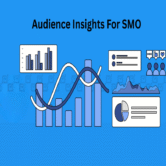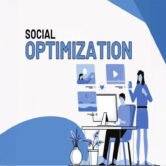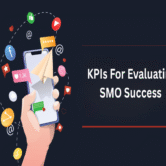
Describe content scoring in nurturing workflows
Introduction
In digital marketing, understanding which pieces of content move prospects closer to conversion is essential for optimizing lead nurturing. Content scoring is a structured approach that assigns value to individual content assets based on their influence on lead behavior and progression through the marketing funnel. Integrated within nurturing workflows, content scoring helps marketing teams prioritize high-performing content, personalize user journeys, and identify sales-ready leads more accurately. When applied effectively, it ensures that marketing automation systems respond intelligently to user engagement, enabling a more targeted and results-driven strategy.
Understanding content scoring fundamentals
Content scoring refers to the process of evaluating the effectiveness of individual content pieces based on how well they engage users and move them toward a conversion goal. Each content asset—whether a blog, email, whitepaper, or video—is assigned a numerical value based on its impact. This value is determined by analyzing user behavior such as click-through rates, time spent, download frequency, and follow-up actions. Scoring provides a data-backed foundation for optimizing content strategies and nurturing flows.
Integrating scoring into lead nurturing workflows
Content scoring becomes especially powerful when embedded into lead nurturing workflows within marketing automation tools like HubSpot, Marketo, or Pardot. As users engage with scored content, their total lead score increases. This score determines the next step in the workflow—whether they receive a follow-up email, are moved to a new list, or flagged for sales outreach. Integrating content scoring in this way ensures timely, relevant communication based on actual engagement behavior.
Scoring based on funnel stage alignment
Different content types serve different purposes depending on their place in the funnel. Top-of-funnel content like blogs or infographics may be scored modestly, as they indicate early interest. Mid-funnel content such as webinars, case studies, or gated eBooks receives higher scores, signaling stronger engagement. Bottom-of-funnel assets like pricing pages or product demos score the highest, often indicating purchase intent. Aligning scoring with funnel stages helps marketers accurately map where a lead is in their journey.
Using engagement metrics for scoring criteria
The effectiveness of content scoring relies on selecting the right engagement metrics. For email campaigns, metrics like open rate and click-through rate can be used. For website content, page views, time on page, scroll depth, and bounce rate are considered. Downloads, form submissions, and repeat visits increase the content’s score. These metrics act as behavioral signals, helping marketers assess how deeply a user is interacting with a brand.
Assigning value through historical performance
Past performance is a valuable indicator when assigning scores to content. By analyzing historical data, marketers can identify which assets consistently contribute to lead qualification or conversion. A whitepaper that has led to multiple demo requests or a webinar that resulted in high retention rates deserves a higher score. Historical data ensures that scoring remains accurate and tied to measurable outcomes, rather than assumptions.
Personalizing nurturing sequences using scores
With content scoring, nurturing workflows become more personalized and effective. Leads who interact with high-scoring content can be routed into workflows that offer more advanced resources or direct sales contact. Conversely, leads with low engagement may remain in longer nurture tracks with educational materials. This tailored approach improves user experience and conversion rates by meeting leads where they are in their journey.
Enhancing sales-readiness detection
One of the primary benefits of content scoring is identifying sales-ready leads. When a lead consumes a series of high-scoring assets in a short period—such as case studies, product demos, and pricing pages—it indicates strong intent. Marketing automation systems can trigger real-time alerts to sales teams, helping them prioritize leads that are more likely to convert. This alignment between marketing and sales ensures efficient use of resources and faster conversion cycles.
Refining content strategy with scoring insights
Beyond workflows, content scoring helps refine the overall content strategy. By reviewing which assets have the highest scores and drive the most engagement, marketers can identify content gaps, replicate successful formats, and discontinue underperforming content. Scoring insights support more informed editorial planning and content investment decisions. It ensures that future content aligns with audience preferences and business goals.
Automating updates and dynamic scoring
As more data is gathered, content scores should be continuously updated. Marketing platforms often allow dynamic scoring models that adjust values based on current engagement trends. For example, if a previously low-performing article suddenly gains traction, its score increases automatically. Automation keeps the scoring system responsive and aligned with real-time user behavior, maintaining the accuracy and relevance of nurturing workflows.
Combining lead and content scoring for holistic insights
When content scoring is combined with lead scoring, marketers gain a 360-degree view of campaign performance. Lead scoring focuses on the user’s overall behavior and attributes, while content scoring zooms in on the impact of each content touchpoint. Together, they allow precise segmentation, targeted messaging, and better forecasting. This combined approach supports better alignment between marketing and sales, driving stronger pipeline outcomes.
Conclusion
Content scoring is a strategic approach that elevates the effectiveness of nurturing workflows. By assigning value to individual content pieces based on engagement and funnel relevance, marketers gain a deeper understanding of what drives conversions. Integrated within automation systems, content scoring personalizes user journeys, enhances lead qualification, and informs smarter content development. In a competitive digital landscape, leveraging content scoring is essential for turning passive content into active conversion tools that move leads closer to a decision.
Hashtags
#contentscoring #leadnurturing #contentmarketingstrategy #digitalmarketingautomation #nurturingworkflows #engagementmetrics #contentperformance #scoringmodel #personalizedmarketing #leadscoringintegration #marketingautomationtools #contentconversion #funnelalignment #b2bmarketingstrategy #contentanalysis #workflowoptimization #marketinganalytics #dynamiccontentstrategy #intentdata #behaviortracking #salesenablement #leadqualification #marketingpersonalization #inboundautomation #contentdrivenleads





